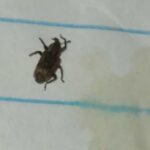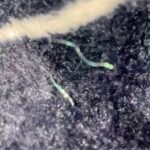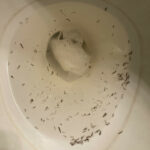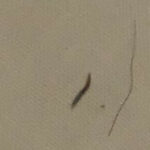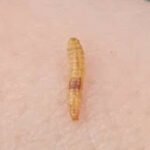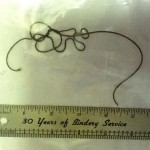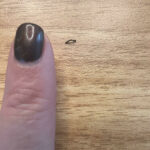A worm snake is any of various harmless burrowing snakes of wormlike appearance. The name worm snake is often given to blind snakes of the family Typhlopidae. The American worm snake, Carphophis amoena, of the eastern United States, of the family Colubridae, is brown or blackish in color, with a pink belly. The worm snake has a pointed head and small eyes. It’s smooth scales give the worm snake a shiny, iridescent quality. This unique look helps to distinguish it from brown and redbelly snakes that have keeled scales. The adult worm snake is usually less than 10 inches (25 cm) long, but they can grow up to 13 inches long. The Oriental worm snake of the genus Trachischium closely resembles the American worm snake species.
While worm snake may look scary to some, these snakes are quite harmless. If you come across one, consider yourself lucky because these shiny creatures are very hard to locate since they burrow up to a foot below the soil surface. The worm snake can also be found under leaf litter or under rotten logs or rocks lying in wait for their prey. Earthworms and other soft-bodied insects are the worm snakes favorite and they are abundant in these dark hiding places.
Worm Snake Habitat
Eastern Worm snakes are found in the eastern United States ranging from southern New England to central Georgia and west to the Mississippi River. If you search for them west of the Mississippi, you will find that the species is replaced by the similar Western Worm Snake, Carphophis vermis. The eastern worm snake species is most common in the Piedmont but is also found in smaller numbers in the mountains and Coastal Plain of South Carolina. The worm snake is non-existent in the vast majority of the Coastal Plain of Georgia.
Rarely will you find the fossorial worm snake far from forested habitats and it is generally most common in deciduous woodlands. In the Coastal Plain, the worm snake is most common in forests adjacent to wetlands or cypress swamps.
Worm snakes mate in the fall. Females store the sperm over winter and use it to fertilize eggs in the spring or early summer. The female eggs are deposited inside mulch piles or under rocks and in rotting logs or stumps. A typical deposit consists of 2-5 small eggs. If the female lays her eggs in June and early July they will usually hatch in August and September.
Worm Snake Status
Currently the worm snake’s status is listed as “Threatened.” It is illegal to harass, kill, collect or possess a worm snake. In certain states such as Massachusetts, it is also illegal to harass, kill, collect or possess a timber rattlesnake, copperhead snake, eastern hognose snake, or a black rat snake.
The penalties for killing, collecting, possessing or even harassing these species can reach as high as $5,000 fine and imprisonment for 180 days or imprisonment. In addition, anyone killing an endangered species may be required to make a restitution payment of $2,000 per animal. Most states are extremely serious about protecting these animals, so the laws are strictly enforced without exception.
All About Worms is always free, always reader-supported. Your tips via CashApp, Venmo, or Paypal are appreciated! Receipts will come from ISIPP Publishing.



